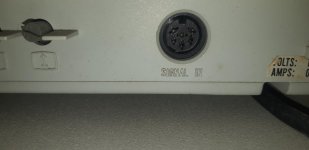VirusVox
Member
Greetings all!
Today I acquired a Philips IBM XT Clone at a Thrift Store for $20. The PC came with a Philips Computer Monitor 80 Monochrome monitor. The only video input on the monitor is what I'm almost certain is S-Video. The video card has a CGA/EGA output on it, and one bigger port that looks sort of like a Parallel port (I don't know the name of it, unless it is in fact a Parallel port). What will be the easiest way to adapt these two video formats to each other in order to use the Monochrome Monitor with the XT Clone?
Thanks!

Today I acquired a Philips IBM XT Clone at a Thrift Store for $20. The PC came with a Philips Computer Monitor 80 Monochrome monitor. The only video input on the monitor is what I'm almost certain is S-Video. The video card has a CGA/EGA output on it, and one bigger port that looks sort of like a Parallel port (I don't know the name of it, unless it is in fact a Parallel port). What will be the easiest way to adapt these two video formats to each other in order to use the Monochrome Monitor with the XT Clone?
Thanks!

